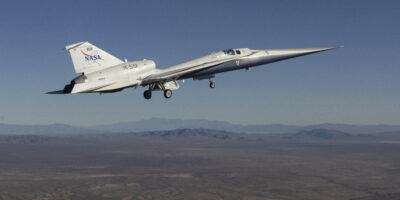Mission Computer: The Backbone of Modern Space Missions
Mission Computer: The Backbone of Modern Space Missions
Space exploration has always been at the forefront of technological advancement. One often overlooked component is the mission computer. This essential system ensures that everything functions smoothly.

The Role of a Mission Computer
The primary role of a mission computer is to manage and process data. It controls various subsystems onboard a spacecraft. This includes navigation, communication, and payload operations. It is essentially the brain of the spacecraft, coordinating its functions.
Subsystem Control
Subsystems range from propulsion to life support. Each requires precise control for mission success. The mission computer integrates these subsystems, ensuring they work in harmony. For example, the navigation system needs accurate data from the sensors. The computer processes this data and provides necessary corrections. It adjusts the spacecraft’s course and speed in real-time.
Data Management
Data management is another critical role. Spacecraft collect vast amounts of data from their instruments. The mission computer stores, processes, and transmits this data back to Earth. It uses advanced algorithms to compress and prioritize information. This ensures that the most critical data is sent first. Managing data efficiently is crucial in the limited bandwidth of space communication.
Hardware and Software Components
Mission computers consist of both hardware and software. Each plays a vital role in their operation. Understanding these components gives insight into their complexity.
Hardware
- Processor: The brain of the computer, handling computations and tasks.
- Memory: Stores data and instructions needed for operations.
- Input/Output Interfaces: Connects the computer to other subsystems and sensors.
- Power Supply: Ensures consistent power for operation.
- Redundant Systems: Provides backup in case of primary system failure.
The hardware is designed to withstand harsh space environments. It must operate in extreme temperatures and radiation levels. Reliability is critical, so components undergo rigorous testing.
Software
Software directs the hardware on what tasks to perform. It includes the operating system, applications, and real-time control systems. The software must be robust and error-free. Bugs or glitches can jeopardize the entire mission. There are different layers of software handling various aspects, from basic operations to complex data analysis.
Real-time Operating System (RTOS)
RTOS is a special type of operating system. It ensures timely and deterministic execution of tasks. This is crucial for mission-critical operations. RTOS manages resources effectively, prioritizing essential tasks during high demand. It has to be reliable and efficient, making sure that the spacecraft operates smoothly at all times.
Challenges in Designing Mission Computers
Designing mission computers comes with unique challenges. Addressing these challenges requires innovation and engineering excellence.
Environmental Concerns
Space is a hostile environment. Electronic components face extreme temperatures, radiation, and vacuum conditions. Radiation can cause bit flips, where the data stored in memory is altered. Shielding components and using radiation-hardened materials can mitigate these effects. Engineers must ensure that the computer can operate reliably under these conditions.
Reliability and Redundancy
Failures are not an option in space missions. Reliability is paramount. Redundancy is built into systems to prevent single points of failure. If one component fails, a backup system takes over. This ensures continuous operation. Engineers also perform rigorous testing and validation to ensure system integrity.
Energy Efficiency
Space missions have limited power availability. Mission computers need to be energy efficient. This involves optimizing both hardware and software for low power consumption. Energy-efficient designs extend mission lifespan and reduce operational costs.
Data Integrity
Maintaining data integrity is crucial. Errors in data can lead to incorrect decisions and mission failure. Error detection and correction mechanisms are employed. These include parity checks, checksums, and more sophisticated error-correcting codes.
Advancements in Mission Computer Technology
Technology is constantly evolving, and mission computers are no exception. Recent advancements have improved their performance and capabilities.
Miniaturization
Advancements in semiconductor technology have led to smaller, more powerful processors. Miniaturization allows for more compact mission computers. This saves space and weight, which is crucial for spacecraft design. It also enables more complex functionality within the same size constraints.
Increased Processing Power
Modern processors offer increased processing power. This allows for more complex computations and data processing. Enhanced processing capabilities enable scientific instruments to perform more detailed analysis. It also improves real-time decision-making and autonomous operations.
Artificial Intelligence (AI)
AI is making its way into space missions. AI algorithms can enhance data analysis and decision-making processes. For example, machine learning can help identify patterns in data that might be missed by traditional algorithms. AI can also improve the autonomy of spacecraft, allowing them to navigate and make decisions independently.
Networked Systems
Modern mission computers often work in a networked environment. Multiple computers share data and coordinate tasks. This distributed approach improves redundancy and fault tolerance. It also allows for more flexible and scalable system designs.
Applications of Mission Computers
Mission computers are used in various space missions, each with specific requirements and challenges.
Satellites
Satellites rely on mission computers to manage their operations. This includes communication, navigation, and data collection. Earth observation satellites, for example, gather vast amounts of data about our planet. The mission computer processes and transmits this data to ground stations.
Deep Space Probes
Deep space probes explore distant regions of our solar system. They operate far from Earth, often with long communication delays. Mission computers enable autonomous operations, allowing probes to navigate and make decisions independently. This autonomy is essential for exploring the unknown and responding to unexpected events.
Manned Spacecraft
Manned spacecraft require mission computers for life support and safety. These systems manage essential functions like oxygen levels, temperature, and waste management. They also provide navigation and communication support, ensuring the crew’s safety and successful mission operations.
Rovers
Rovers, like those on Mars, rely heavily on mission computers. These systems control navigation and scientific instruments. Rovers often operate in harsh environments, requiring robust and reliable mission computers. The autonomy provided by these computers allows rovers to explore and conduct experiments independently.
Future Trends in Mission Computer Development
The field of mission computers continues to evolve. Future trends promise to enhance their capabilities even further.
Quantum Computing
Quantum computing holds great potential for space missions. It offers exponentially greater processing power compared to classical computers. This can enable more complex simulations and data analysis, providing new insights into space phenomena. Quantum computers may eventually become part of advanced mission control systems.
Interstellar Missions
Interstellar missions will push mission computers to their limits. These missions will require highly autonomous and resilient systems. Advances in AI and machine learning will be crucial. These technologies will enable spacecraft to operate independently for extended periods.
Integration with Ground Systems
Enhanced integration with ground systems will improve mission efficiency. Data from space missions can be processed collaboratively with ground-based supercomputers. This will enable more detailed analysis and faster decision-making. It also opens up possibilities for new types of collaborative space exploration missions.
3D Printing and Self-Repairing Systems
3D printing technology may enable the manufacturing of spare parts in space. Mission computers could incorporate self-repairing mechanisms to enhance reliability. These advancements would reduce dependence on Earth-based resources and extend mission lifespans.
Mission computers are the unsung heroes of space exploration. They manage critical tasks and ensure the success of missions. As technology advances, these systems will become even more capable. The future of space missions is closely tied to the evolution of mission computer technology.




Subscribe for Updates
Get the latest articles delivered to your inbox.
We respect your privacy. Unsubscribe anytime.